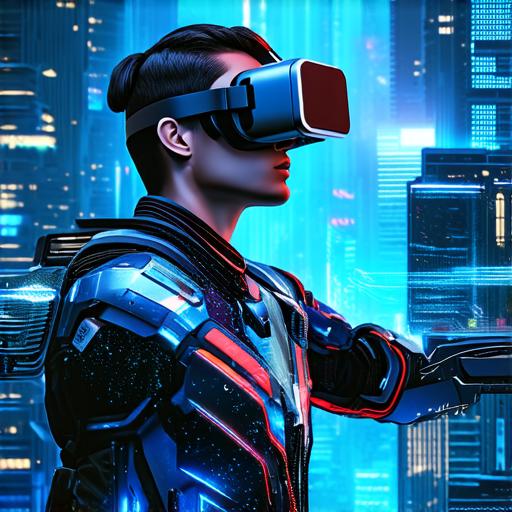Virtual reality (VR) technology is an emerging field that has gained significant attention in recent years. It’s a computer-generated simulation of a 3D environment that can be interacted with using specialized VR devices such as headsets or gloves. The potential applications of VR are vast and varied, ranging from entertainment to healthcare to education.

Virtual Reality in Entertainment
One of the most well-known applications of VR technology is in the entertainment industry. With VR, users can immerse themselves in a virtual world, experiencing games, movies, and other forms of entertainment as if they were really there.
This has led to a new era of interactive gaming, where users can engage with characters and environments in ways that were previously impossible.
For example, the VR game “Beat Saber” allows users to swing virtual light sabers to the beat of music, creating an immersive and engaging experience. Similarly, the movie “The Climb” is a 360-degree VR experience that transports viewers to the top of a vertical cliff face, allowing them to feel as if they are actually climbing the mountain.
Virtual Reality in Healthcare
Another application of VR technology is in healthcare. It has the potential to revolutionize the way we diagnose and treat illnesses by providing doctors with a more accurate and immersive view of their patients’ conditions.
For example, surgeons can use VR simulations to practice complex procedures before performing them on real patients, reducing the risk of complications and improving patient outcomes.
Additionally, VR technology can be used for pain management in hospitals. Patients can wear VR headsets to distract them from their pain and provide a sense of immersion that can help to reduce discomfort and anxiety. This can lead to better patient experiences and improved recovery times.
Virtual Reality in Education
VR technology also has the potential to transform education by providing students with immersive learning experiences that are more engaging and interactive than traditional methods.
With VR, students can explore virtual environments and interact with objects and characters in a way that is not possible in real life. This can help to improve retention and understanding of complex concepts.
For example, the VR app “Endless Alphabet” teaches children the alphabet by allowing them to manipulate letters in a 3D environment. Similarly, the VR app “Anatomely” allows medical students to explore the human body in a virtual environment, providing them with a more accurate and immersive understanding of anatomy and physiology.
The Future of Virtual Reality Technology
As VR technology continues to develop, we can expect to see even more exciting applications in the future. For example, VR technology could be used for remote collaboration, allowing people from different parts of the world to work together in virtual environments.
Additionally, VR technology could be used for training and simulation in industries such as aviation, military, and emergency services. By providing immersive simulations that replicate real-world scenarios, VR could help to improve safety and reduce the risk of accidents.
Conclusion
Virtual reality technology is an emerging field that has the potential to revolutionize many aspects of our lives. Whether it’s immersing ourselves in a virtual world or using it for medical procedures, education or training, virtual reality technology has the power to improve our experiences and make our lives easier and more efficient.
As virtual reality technology continues to develop, we can expect to see even more exciting applications and uses for VR in the future.
